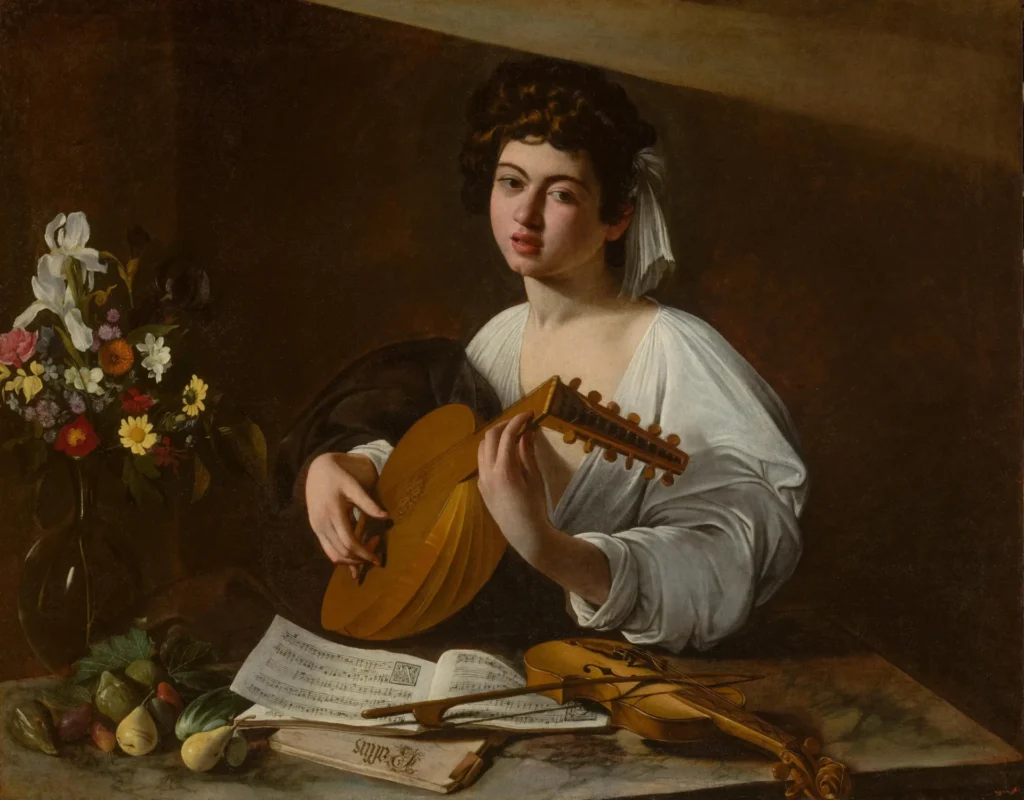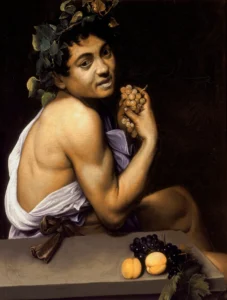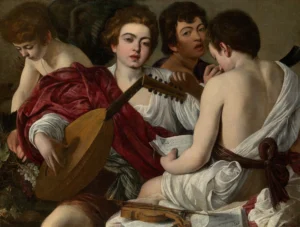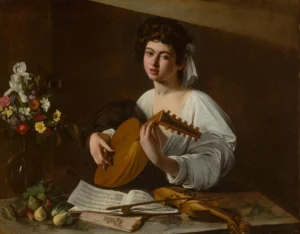The Lute Player (circa 1595)
Created between 1595-1597, The Lute Player by Caravaggio is a mesmerizing portrayal of a young man playing the lute, embodying the artist's innovative approach to light and shadow through chiaroscuro. The painting features a captivating androgynous figure, believed to be modeled either by Pedro Montoya or Mario Minniti, and includes various symbolic elements that hint at the fleeting nature of life and love. Commissioned by Cardinal Francesco Maria del Monte, this piece contributed greatly to the development of Caravaggio's signature style and highlights his connections within the artistic patronage of Rome.
1595 - 1597
About the Artwork
Did You Know
Liked what you see? Add it to your collection.
Enjoyed reading? Share it.
... continued
Multiple Versions
There are three known versions of The Lute Player: One is located in the Hermitage Museum in St. Petersburg. Another is in the Wildenstein Collection. The third, considered by some to be the original, was discovered at Badminton House in Gloucestershire and is now recognized as a key version.
Subject and Model
The painting depicts a young man, often described as androgynous, playing the lute and singing a madrigal. The model is believed by some to be Pedro Montoya, a Spanish castrato who was part of Cardinal del Monte's household and sang at the Sistine Chapel. Others suggest it might be Mario Minniti, a companion of Caravaggio who modeled for several of his works, including 'The Cardsharps' and 'The Fortune Teller.'
Artistic Techniques
The painting showcases Caravaggio's early use of chiaroscuro, a technique that emphasizes the contrast between light and dark to create a three-dimensional effect. This style, influenced by the Brescia masters of the 16th century, marks a significant step towards Caravaggio's mature and dramatically lit style, characterized by heightened contrast between shadows and light (tenebrism).
Details and Symbolism
The painting includes still-life elements such as a carafe of flowers with reflections, fruits, and musical instruments. The Hermitage version features a spinettina, a tenor recorder, and a caged songbird, while other versions include wilted flowers and overripe fruits, symbolizing the ephemerality of love and life.
Patronage
The painting was commissioned by Cardinal Francesco Maria del Monte, one of Caravaggio's major patrons in Rome. It is believed to have been intended for the studiolo in Del Monte's Casino on the Pincio, where Caravaggio also painted other works.
Restoration and History
One of the versions was painted over an older, unfinished work, possibly a devotional portrait of the Madonna and Child. The Hermitage version was examined using X-ray, revealing these underlying layers and confirming its authenticity.










